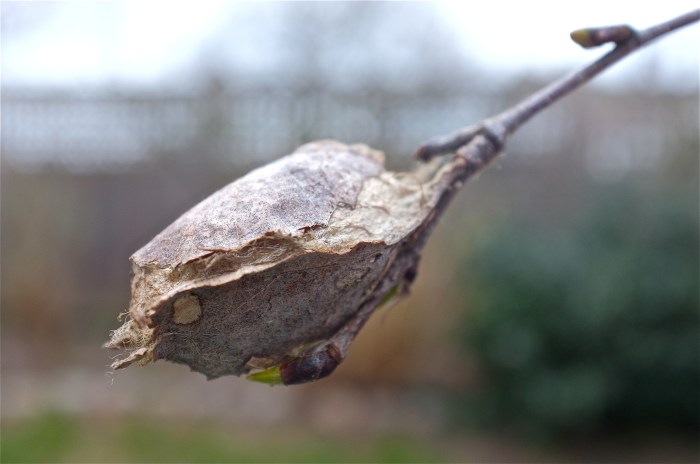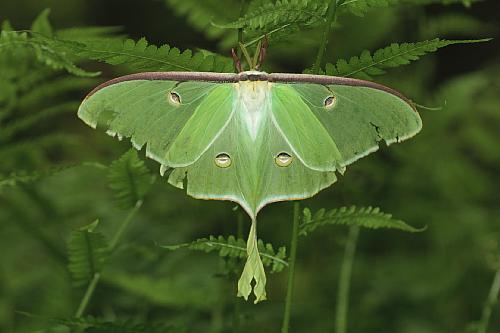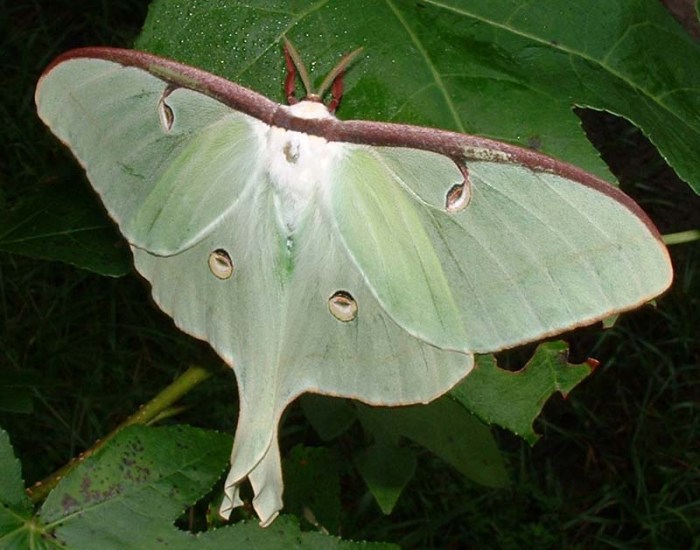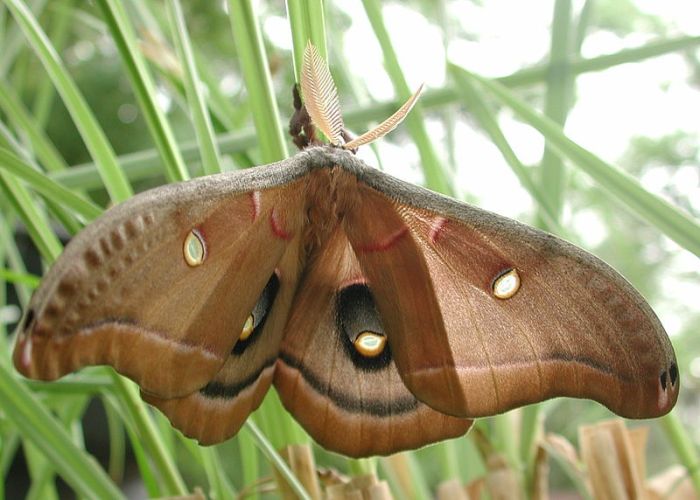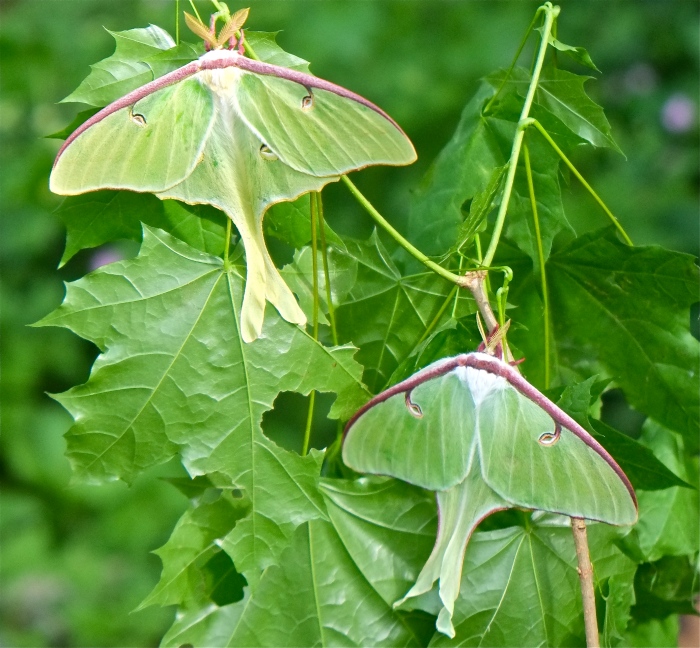 Considered by many to be North America’s most beautiful insect, a newly emerged Luna Moth will melt the heart of even the most vehement of insectophobes. These male and female pristine beauties were photographed at new friend Jane’s lush garden in Gloucester. Jane, along with her friend Christine (who we met last week), intend to repopulate Cape Ann with members of our native Giant Silkmoth Family. See story here.
Considered by many to be North America’s most beautiful insect, a newly emerged Luna Moth will melt the heart of even the most vehement of insectophobes. These male and female pristine beauties were photographed at new friend Jane’s lush garden in Gloucester. Jane, along with her friend Christine (who we met last week), intend to repopulate Cape Ann with members of our native Giant Silkmoth Family. See story here.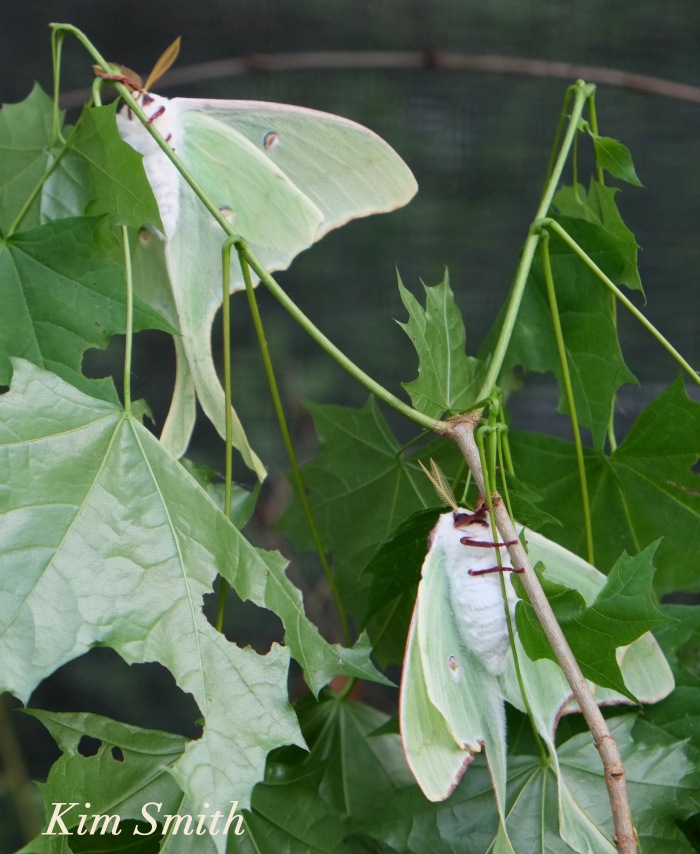
In the photo above, the female is in the lower right. You can easily tell the difference because the male has much fuller antennae–all the better to detect the female’s pheromones.
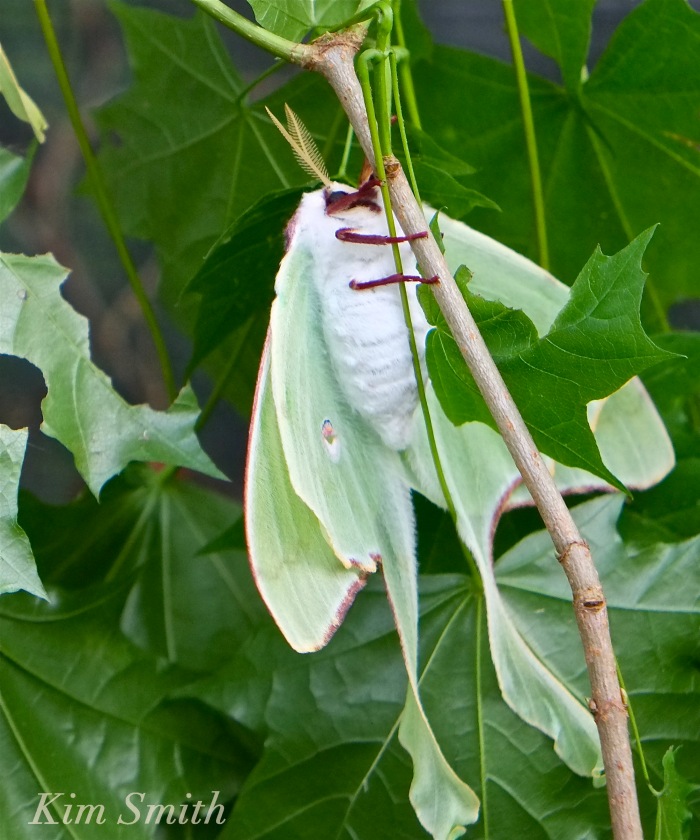 Her abdomen is swollen with eggs. A female Luna Moth will oviposit between 400 to 600 eggs, more during warm weather.
Her abdomen is swollen with eggs. A female Luna Moth will oviposit between 400 to 600 eggs, more during warm weather.
Not quite as large as the Cecropia Moth, nonetheless its wings span nearly four and a half inches. You are most likely to see Luna Moths flying during evening hours and the caterpillars munching on birch leaves, one of their favorite food plants in our region. The adult moths only live for a week and during that time are unable to eat (they emerge without mouthparts). The mature Luna Moth’s sole purpose is to mate and deposit eggs of the next generation.
Many thanks to Christine and Jane for sharing their passion for the gorgeous Giant Silkmoths!
This short film of a Luna Moth in flight was made after finding a Luna Moth at Willowdale Estate. I returned home with the moth and as evening approached it began to quiver and vibrate in preparation for flight. I had been listening to Ave Maria and it was playing in the background so I left it in the video and think the music perfect for this most stunning of creatures.
Jane’s Garden
 Rare-for-these-parts Blue Poppy (Meconopsis rudis)
Rare-for-these-parts Blue Poppy (Meconopsis rudis)







